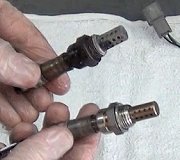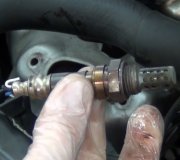'95 and older cars have only one oxygen sensor.
There's two things to consider. I have heard stories about Hondas needing O2 sensors from the dealer. Aftermarket parts are usually designed from reverse-engineering an original part, and sometimes there are things that aren't known or obvious so they get overlooked. Also, a real lot of aftermarket parts are simply rebranded parts from the original supplier. GM, for example, builds about 80 percent of their parts and they buy 20 percent from other vendors. You have a good chance of running into an aftermarket part that won't work in that application because GM has a real bad reputation for not sharing information with anyone else. Chrysler makes about 20 percent of their parts and they buy about 80 percent from other suppliers that specialize in the products they build. Those suppliers also supply the same parts to other auto parts stores. If you buy a fuel pump for a Chrysler vehicle from NAPA and one from the dealer, they came from the same factory so you know they'll both work.
The next thing to look at is how long it takes for the diagnostic fault code to set and the Check Engine light to turn on. If there is a wiring problem, the light may turn on as soon as you start the engine. If the sensor is causing the problem, it isn't even in the fuel metering calculations yet until the system goes into "closed loop", and that occurs based on coolant temperature, typically three to ten minutes after engine startup. The Engine Computer needs to see an incorrect or missing signal for a while before it sets a fault code. You need a scanner to view live data to see the signal voltage the computer is seeing. That is all you have to go on to see why the fault code is being set.
On '96 and newer cars there are dozens of fault codes that can be set related to each O2 sensor and they mean very different things. Fault codes on your car aren't that sophisticated yet, so you can't really tell why the computer is setting the code.
Also be aware there are some cars where disconnecting the battery doesn't erase fault codes. I seem to recall that is more of a problem with Air Bag Computers, but to be sure, you need a scanner to erase codes. It might be that you're seeing the original code that never got erased.
For future reference, disconnecting the battery to erase fault codes can be a REAL bad idea on some newer cars, particularly European imports. They have a lot of tricks built in that cause computers to lock up requiring a tow to the dealer to unlock them. It's not that uncommon to hear of $1000.00 repair bills after an owner tried to replace a defective battery.
Friday, March 25th, 2016 AT 8:39 PM



